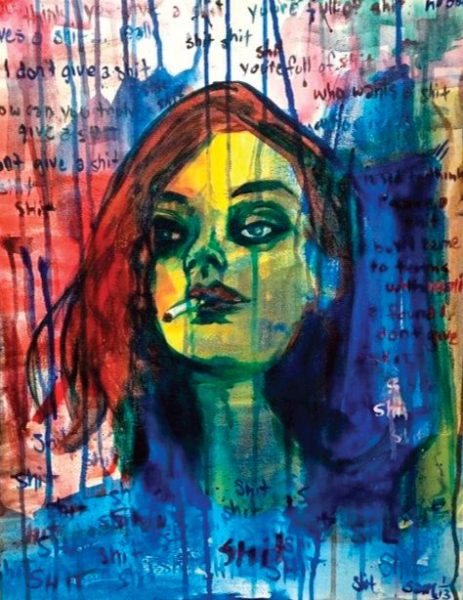Your story, on the surface at least, is about physical pain and your narrator’s relationship to it. It’s tightly focused on this concern, never revealing the precise circumstance of the story or even the narrator’s relationship with the man (doctor?) who hands her the remote. This creates a powerful effect. However, all this mystery compels me to ask, what inspired you to write it?
It started as a workshop assignment—does that sound dull? Each of the participants was asked to introduce him or herself with a short, declarative sentence, and we had to use one of those sentences as the opener for a one-page piece. There wasn’t much to choose from, since we didn’t know those openers were going to be prompts—we merely thought we were saying hello. At first I resisted “I’m in charge,” which seemed the most obvious of the choices. I wanted to choose one of the more esoteric openers, like “I’m here” or “I’m also here,” and see where I could take it.
Although your narrator discusses physical pain and all its varieties, she’s in search of a “pain that obliterates, like a white hot blast, actual hurt.” Is this a story also about emotional pain—or perhaps the complex relationship between the two?
Yes. As adolescent as it may sound, physical pain has that ability to cleanse emotional pain, or at least cut through the noise. Some people have trouble understanding why people choose to hurt themselves, but healthier forms of physical pain—yoga or running, for example—have the same ability to provide emotional or mental relief. Anything that turns the attention to the body. But we don’t call that masochism, just discipline.
At the beginning of the story, the doctor-figure asks the narrator to rate her pain by number. Toward the end, she says this about communicating pain: “I would like to say that what I think I need is not a numeric scale but word choices, to parse out all these things lazily referred to by the same name.” Do you think language offers a more complex and various medium for expressing pain than a system which quantifies pain?
I work in the hospital world, where they often use the Wong-Baker Faces scale (smiley face, frowny face) for pain because language is too imprecise, too relative. Everything is quantified. But even in medicine, these limits are recognized: just this month at work there is a display of postcards from patients all over the world drawing their experience of pain, with the hope of helping medical students understand the patient experience. Many of the drawings illustrate the emotional pain of illness as much as physical pain. But whether it’s a frowny face meant to indicate intensity or a complex drawing expressing a particular quality of pain, both reflect the inability of language to tell the story. Pain has to be one of the hardest working words in the language, left to cover an incredible range of human experience.
How do you think your story would’ve changed with a man as the narrator? Or if the doctor-figure had been a woman? Are sexual politics coming into play here? To what degree?
Yes, I think it would be different. Particularly when there is a sexual power dynamic at play, I think we still tend to read male characters as actors and women as acted upon. With a male narrator, I feel like it might have read as more erotic at the beginning, with the assumption that this was something the man had invited upon himself. The steely imagery that is frightening might have sounded more openly sexual. With a woman, we are more likely to see her as a potential victim, or at least it is more ambiguous until there’s a kind of agency revealed at the end.
When I first read this story, I was so impressed with your voice and the precision of your editing. Every sentence and every detail is working for the piece. Could you speak a little about your writing process?
I write almost exclusively in the 7,000-9,000 word range, so that’s a different process. I tend to be a messy writer without precision. I obsess about the rhythm of sentences as they stack up, which can create a real lack of economy. But in this case, the process was driven by time constraints, which can be a gift. It was an overnight assignment and I had already planned to attend a friend’s reading, so that gave me about an hour. I had to do a lot of the “work” while driving so when I sat down to the page I’d made some key decisions. All of the options for openers were first-person statements that seemed to lead to monologues. “I’m in charge,” suggested rants, unreliable first person narrators, speeches of all kinds. I even tried hip-hip monologues. I didn’t want to do any of that. I decided what I needed was to subvert the statement right away, and create another actor. And an object in the physical world. So I needed that second sentence to do a lot of work. By fighting my impulse to follow one of the many loud voices that “I’m in charge,” suggested, I made smarter choices. Most of the work was in discarding a dozen bad ideas.



 The core workshop of SmokeLong Fitness is all in writing, so you can take part from anywhere at anytime. We are excited about creating a supportive, consistent and structured environment for flash writers to work on their craft in a community. We are thrilled and proud to say that our workshop participants have won, placed, or been listed in every major flash competition. Community works.
The core workshop of SmokeLong Fitness is all in writing, so you can take part from anywhere at anytime. We are excited about creating a supportive, consistent and structured environment for flash writers to work on their craft in a community. We are thrilled and proud to say that our workshop participants have won, placed, or been listed in every major flash competition. Community works.